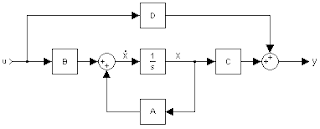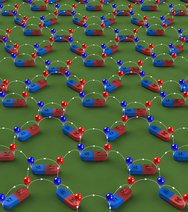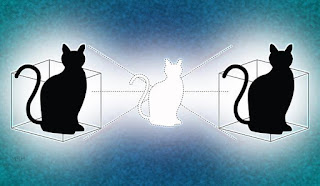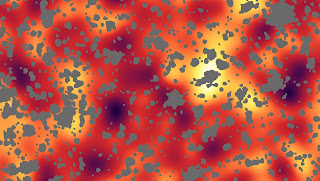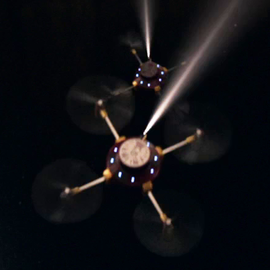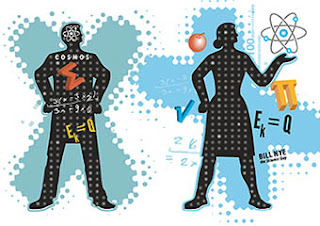A week ago on Genesis Radio, I talked about my new novel, "Ruins of the Fall: Tree of Might". It's the first part of a trilogy telling the story of a militant civil rights leader, Ramsus Zephyr, as he sets his sights on Caucasian genocide, pushing Black America to develop weapons of mass destruction. Of course, everything is not as it seems as the Blacks beneath him begin to see ulterior motives outside of Black freedom. It has ninjas, superheroes, and some sci-fi tidbits I picked up from this very website. There's a chapter from it in one of my old blogs. You can give the book a review here but here's a chapter from the upcoming sequel. Remember it's still a work in progress (estimated release November 2017).
The Disposable
The Grand Hotel in Tel Aviv, Israel is a marvelous building, one of the best the country has to offer. Zisa and her team, the Southern Pines are standing in one of the luxury suites on the upper floors. Long ceiling-high windows stand together on two walls flooding the room with the sunlight of the afternoon. Stairs accented with gold leaflets lead to an upper level bedroom with a view of the entire suite and the sprawling metropolis outside. A sunken den with a theater-size monitor add to the decadence with a whirlpool Jacuzzi providing the final touch. Zisa Francoeur are here to guard this suite’s current resident:
Israel Stein.
The red-headed man approaches Zisa as she stands in the overhanging bedroom.
“I hope you can forgive the reassignment,” he says to Zisa. “I have some guests coming here and your team comes highly recommended for providing the proper…entertainment.
Zisa looks down at the entertainment center, where her beta and gamma teammates are laying plastic sheets over the couches. “Thank you, sir,” she replies. “It’s always an honor to serve the Convention in any capacity.” I’m sure Full Moon squad can protect Ramsus in our absence.
Israel nods. “I agree. My guests will be along shortly. Be ready when I give the signal.”
Zisa watches from above as Israel’s guests walk in. One by one, they arrive, pudgy men, softened by wealth. Some are portlier than others. Some are Arab. Others are Jewish. None of them are happy. Mr. Stein is nowhere to be seen. Her beta and gamma teammates are greeting the men and directing them to the entertainment area. As the guests begin to number over a dozen, Zisa sends her gamma to fetch some extra chairs from one of the meeting rooms downstairs.
Mr. Stein is still missing. Zisa can understand why as she observes that several of the men have brought bodyguards of their own. These Arab and Jewish men do not trust Israel Stein. Neither should they, Zisa thinks, as she stands still in her Brahmin armor, invisible to the naked eye.
Zisa urinates into the suit’s catheter. The Brahmin armor will convert the urine into energy and store it in its reserve batteries. The process produces water which Zisa srinks silently through a tube in her mouth. Excess heat is dissipated through air holes on her back. Metal hooks attached to thin metal strings hang from her belt, hidden from view by a long flap of dielectric cloth, the material that enables the suit to turn invisible. Her beta and gamma teammates are dressed in purple and black dress uniforms. Mr. Stein wants to use them as a distraction. Only Zisa is dressed for “entertainment” purposes. Zisa watches these men from beneath an invisible helmet masking her face.
When three o’ clock arrives, the theater-size flatscreen cuts on by itself. Israel Stein’s face fills the screen. “Good afternoon, gentlemen,” greets Mr. Stein. “I apologize for not being able to be among you today.”
One of the Arab guests shouts at the screen, “You will pay for what happened in Gaza!”
Zisa remembers the slaughter of innocent Palestinians in Gaza. She was there protecting Ramsus Zephyr, who was manipulated by Israel Stein into slaughtering the impoverished Arabs. He did so to regain favor with the Israeli prime minister. Zisa surmises these Arabs must be exiles from Palestine and the Jewish men are political dissidents from the country of Israel.
Mr. Stein responds to the Arab’s outburst with, “Please, please, gentlemen. Our partnership was forged in the understanding that peace would be brought to Palestine. This has been achieved. The fact that you are all here proves it. The long awaited two-state solution has been implemented and the Palestinians of the West Bank are free of Israeli rule.”
Another angry Arab yells, “The deaths of thousands of Arabs are on your head.” A Jewish man yells, “The two-state solution is not a guarantee of peace!”
From the television screen, Mr. Stein offers, “Please, calm yourselves, gentlemen. The two-state solution will grant Palestine peace as the nation of Israel will only expand into Gaza, not the West Bank. Yes, thousands did die when Gaza’s populace was decimated, but after three thousand years of war, the deaths of 1,033,642 people is a bargain.”
“How do we know the prime minister will keep his word?” several men grumble aloud.
“Well,” Mr. Stein answers, “The prime minister has become aware of the racial tensions that have exploded in America, thanks to the Convention and your silent, but generous funding, and he and I have come to an agreement.”
A tense quiet grips the room.
“You talked to Bibi?” someone asks.
Israel Stein smiles casually. “Yes, I talked to Bibi,” he answers, “and I assured him that the Convention will never cause any trouble in Israel as long as the country deals favorably with its darker-skinned neighbors, especially its neighbors in and from Ethiopia.”
The men look around at each other and at the two young men in purple outfits that welcomed them in.
Someone asks, “You assured him?”
“Yes, I did,” says the red-haired man on the screen, “I made the prime minister aware of the funding the Convention received, the funding you were giving them, in exchange for his non-interference in the West Bank.”
The men become nervous. Zisa gets ready. Mr. Stein goes on, “With your deaths, Bibi can assure the hardliners that Zion will not meet the same fate as America.” The red-headed man gives a salute. “Gentlemen, it has been an honor.”
The screen goes black. Her two teammates reach under the sports jackets and begin hurling knives at the bodyguards’ throats. Arterial sprays mortify the pudgy targets, freezing them with fear. Zisa leaps from the upper level, flipping through the air. Hooks fly from her hands and embed themselves deep into tender flesh. Metal filaments attached to the hooks go taut in Zisa’s fingers as she flies through the air. She yanks the strings. Chunks of flesh populate the air as Zisa’s feet touch the ground. Crimson gouts of blood gush and break forth from their venous prisons. Zisa stands still for a second to listen to the pitter-pater of blood droplets falling onto the plastic her teammates laid out for these guests.
Zisa scans the room for the remaining men. Her hooks go out and she reels them back in. Throats are ripped open. Blood is set free. The pitter-patter of the plastic applauds the arrival of fresh-fallen blood. Zisa turns off the Brahmin armor. She’s so drenched in blood, her form is clearly visible: a red mistress holding meat hooks in her hands. She scans the carnage for survivors.
She sees one. Zisa delicately steps over the bodies, making sure not to slip in the copious pools of human fluids. The survivor is crawling towards the door. Zisa reaches down and lifts his head up by cupping his chin from behind. She makes sure the survivor can still see the door. Zisa wants the man to have some hope of escape in his heart. A life without hope is a cruel fate, Zisa knows. In her mercy, Zisa will not allow the man to die a hopeless death.
She lets the survivor, who’s still in shock, look at the hotel room door for another second, letting dreams of miracles dance through his mind. Zisa smiles to herself. This is the moment. These, she thinks, should be his last thoughts. Zisa puts the point of a meat hook at the base of the man’s head, where his throat meets his jaw. Zisa yanks back hard on the hook. She hears the cartilage crunch as the hook breaks through his wind pipe. Zisa feels the hook pierce the tight groove between the man’s cervical vertebrae. She angles the hook as she pulls to get more penetration. All of this happens in an instant. Zisa feels the body go limp. Then Zisa yanks the hook around the man’s neck, tearing at the flesh as she goes. When she’s done, Zisa gives the neck a twist and…
Pop.
The head comes off. Zisa takes a moment to admire the slack-jawed expression of miracles dared dreamt on the face of the severed head. “Ah,” Zisa exhales with pride. “A job well-done.”
The beta chides Zisa for not killing the survivor on top of the plastic. Now they’ll have to get some heavy duty cleaner to wipe down the walls and floor.
The monitor clicks on again. Israel Stein appears and speaks, “Miss Francoeur, on behalf of our Great Master, Ramsus Zephyr, I would like to extend his gratitude towards you and your squad, the Southern Pines, for your years of service to the Convention.”
Zisa responds, “The honor is ours. We live to serve the Master, Ramsus Zephyr.”
“Sadly,” Israel expounds, “with the death of the Convention’s financial backers, the Convention as you know it has come to an end, Miss Francoeur.”
Zisa and her teammates exchange quixotic looks.
“Your service is no longer required,” states Mr. Stein.
Gasping, as if the words hit her physically, Zisa utters, “Your attempt at levity is not appreciated. We are loyal Simonites. Ramsus knows this. We have proven it.”
“The question is not of loyalty, Miss Francoeur,” says the man on the television, “but of politics. As I said before, the Convention as you know it is over. We are not in the real estate or organ trafficking industries any longer. We are military contractors with the nation of Ethiopia, to aid in their expansion. Ethiopia, Miss Francoeur, is a Christian nation with a low tolerance for the Muslims within its borders. They would never dream of bringing in Muslim military contractors from outside their borders. Thus, in the interest of Ethiopian expansion and African Unity, your relationship with Ramsus Zephyr is now terminated.”
“Terminated?”
Her gamma teammate explodes suddenly into fragments of human meat.
“Yes,” Mr. Stein reiterates, “Terminated.” The screen goes black.
Zisa looks into the face of her beta teammate, a warrior she grew up with and fought beside. There’s a flash of light, and he’s gone.
Zisa stops thinking. Her legs jump backwards to distance her body from a bomb Zisa hadn’t noticed was there. The blast form it blows her back. Her ears are ringing, but she’s okay. None of it seems real. Taking lives is easy, but watching her comrades die is the hardest thing Zisa’s ever done. Her hearing is clearing up. Her mind is not. They’re dead. They’re both dead. Why? How? And the most pressing question in her mind…
“Why didn’t I kill you first?” says a voice in the room. “I bet that’s what you’re thinking right now.”
Zisa twitches her head from side to side, looking for the source of the voice. She hears chittering laughter.
“Big, bad Zee,” the voice mocks. “The Master’s favorite. How’s it feel to fall from grace?”
“Who are you?”
A form materializes near the windows. It’s wearing armor, Cloud Jumper armor, like Kamau and HeBoy used to wear. This armor’s different though. It’s smaller and the frame seems designed to compensate for a woman’s curves.
“Didn’t Mr. Stein tell you?” the armored woman asks. “I’m the entertainment.”
Zisa takes note of the woman’s helmet. The visor doesn’t go all the way across, as if designed for a wearer with a missing eye.
“Phaedra…” Zisa surmises.
The famed explosives expert and alpha of the East Wind takes a bow in her armor. “Y’know, Zee, this Jumper armor is so much better than the Brahmin armor. It has shields, fields, strength enhancers, flight capability…the works. I’ve always been curious though. How would it hold up in an explosion?”
Zisa hears a beeping noise. Then she hears dozens of beeping noises. It’s coming from the ceiling. Zisa doesn’t bother looking up. She knows what’s going on. Phaedra rigged the roof to explode, so if the explosions don’t kill Zisa, the falling debris will. It’s the kind of overkill “Crazy” Phaedra is famous for.
Zisa watches as Phaedra pulls out a detonator switch. The Southern Pines are dead. Ramsus has betrayed her. Hatred begins to fill the very core of her being. I can’t die today, she thinks, I have too many people to kill.
Then her world becomes white fire roaring in her ears, punctuated with the hysterical laughter of Phaedra Willis.
